10g
Showing 1251–1300 of 1404 results
-
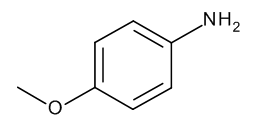
p-Anisidine
$148.35 Add to cart View Product DetailsMolecular Formula : C7 H9 N O
-

p-Chloroacetophenone
$132.83 Add to cart View Product DetailsMolecular Formula : C8H7ClO
-

p-Naphtholbenzein
$154.54 Add to cart View Product Detailsp-Naphtholbenzein
-

p-t-Butylphenyl Diphenyl Phosphate
$1,683.60 Add to cart View Product DetailsMolecular Formula : C22H23O4P
-

Palladium on Charcoal, 5 Percent, Catalyst, Powder
$346.13 Add to cart View Product DetailsPalladium on Charcoal, 5 Percent, Catalyst, Powder
-
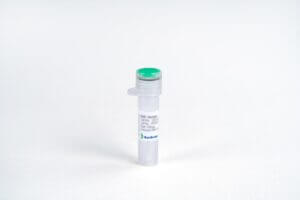
PD-L1 Fc Chimera, Mouse
$34.50 Add to cart View Product DetailsProgrammed death-ligand 1 (PD-L1) also known as cluster of differentiation 274 (CD274) or B7 homolog 1 (B7-H1), is a protein that in humans is encoded by the CD274 gene. PD-L1 is a 40 kDa type 1 transmembrane protein that has been speculated to play a major role in suppressing the immune system during particular events such as pregnancy, tissue allografts, autoimmune disease and other disease states such as hepatitis. Normally the immune system reacts to foreign antigens where there is some accumulation in the lymph nodes or spleen which triggers a proliferation of antigen-specific CD8+ T cell. The formation of PD-1 receptor / PD-L1 or B7.1 receptor /PD-L1 ligand complex transmits an inhibitory signal which reduces the proliferation of these CD8+ T cells at the lymph nodes and supplementary to that PD-1 is also able to control the accumulation of foreign antigen specific T cells in the lymph nodes through apoptosis which is further mediated by a lower regulation of the gene Bcl-2. PD-L1 binds to its receptor, PD-1, found on activated T cells, B cells, and myeloid cells, to modulate activation or inhibition.
-
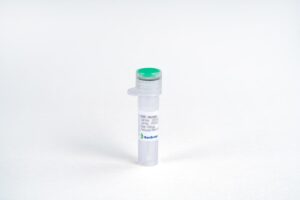
PDGF-AA, Mouse
$90.56 Add to cart View Product DetailsPlatelet-Derived Growth Factor-AA (PDGF-AA) is one of five dimers (PDGF-AA, AB, BB, CC, and DD) formed by 4 different PDGF subunits. In chemical terms, platelet-derived growth factor is a dimeric glycoprotein composed of two A (-AA) or two B (-BB) chains or a combination of the two (-AB). The dimeric isoforms PDGFAA, AB and BB are differentially expressed in various cell types, and their effects are mediated through two distinct receptors termed α and β. Differences exist in isoform binding to each receptor. Ingeneral, PDGF isoforms are potent mitogens for connective tissue cells including dermal fibroblasts, glial cells, arterial smooth muscle cells and some epithelial andendothelial cells. In addition to its activity as a mitogen, PDGF is chemotactic for fibroblasts, smooth muscle cells, neutrophils and mononuclear cells. PDGF-AA plays a significant role in blood vessel formation (angiogenesis).
-

PDGF-BB, Bovine
$103.50 Add to cart View Product DetailsPlatelet-derived growth factor (PDGF) presenting in serum but absent from plasma was first discovered in an animal study by Lynch and co-workers in the late 1980s. It is a disulfide-linked dimer consisting of two peptides-chain A and chain B. PDGF has three subforms: PDGF-AA, PDGF-BB, and PDGF-AB. It is involved in many biological processes, including hyperplasia, embryonic neuron development, chemotaxis, and respiratory tubule epithelial cell development. The function of PDGF is mediated by two receptors (PDGFR-α and PDGFR-β).
-

PDGF-BB, Human
$103.50 Add to cart View Product DetailsPlatelet-derived growth factor (PDGF) presenting in serum but absent from plasma was first discovered in animal study by Lynch and co-workers in the late 1980s. It is a disulfide-linked dimer consisting of two peptides-chain A and chain B. PDGF has three subforms: PDGF-AA, PDGF-BB, PDGF-AB. It is involved in a number of biological processes, including hyperplasia, embryonic neuron development, chemotaxis, and respiratory tubule epithelial cell development. The function of PDGF is mediated by two receptors (PDGFR-α and PDGFR-β).
-

PDGF-BB, Human
$155.25 Add to cart View Product DetailsPlatelet-Derived Growth Factor-BB (PDGF-BB) is one of five dimers (PDGF-AA, AB, BB, CC, and DD) formed by 4 different PDGF subunits. In vivo, PDGF-BB is mainly produced in heart and placenta, and predominantly expressed by osteoblasts, fibroblasts, smooth muscle cells, and glial cells. An inactive precursor of PDGF-BB is produced in the endoplasmic reticulum and then activated by a proprotein convertase after secretion. PDGF-BB functions in a paracrine manner and promotes organogenesis, human skeletal development, and wound healing. PDGF-BB also promotes angiogenesis, particularly in the presence of Fibroblast Growth Factor basic. Therefore, PDGF-BB and its related pathways are potential pharmacological targets.
-

PDGF-BB, Human (P. pastoris-expressed)
$94.88 Add to cart View Product DetailsPlatelet-Derived Growth Factor-BB (PDGF-BB) is one of five dimers (PDGF-AA, AB, BB, CC, and DD) formed by 4 different PDGF subunits. In vivo, PDGF-BB is mainly produced in heart and placenta, and predominantly expressed by osteoblasts, fibroblasts, smooth muscle cells, and glial cells. An inactive precursor of PDGF-BB is produced in the endoplasmic reticulum and then activated by a proprotein convertase after secretion. PDGF-BB functions in a paracrine manner and promotes organogenesis, human skeletal development, and wound healing. PDGF-BB also promotes angiogenesis, particularly in the presence of Fibroblast Growth Factor basic. Therefore, PDGF-BB and its related pathways are potential pharmacological targets.
-

PDGF-BB, Mouse
$86.25 Add to cart View Product DetailsPlatelet-Derived Growth Factor-BB (PDGF-BB) is one of five dimers (PDGF-AA, AB, BB, CC, and DD) formed by 4 different PDGF subunits. In vivo, PDGF-BB is mainly produced in heart and placenta, and predominantly expressed by osteoblasts, fibroblasts, smooth muscle cells, and glial cells. An inactive precursor of PDGF-BB is produced in the endoplasmic reticulum and then activated by a proprotein convertase after secretion. PDGF-BB functions in a paracrine manner and promotes organogenesis, human skeletal development, and wound healing. PDGF-BB also promotes angiogenesis, particularly in the presence of Fibroblast Growth Factor basic. Therefore, PDGF-BB and its related pathways are potential pharmacological targets.
-

PDGF-BB, Rat
$86.25 Add to cart View Product DetailsPlatelet-Derived Growth Factor-BB (PDGF-BB) is one of five dimers (PDGF-AA, AB, BB, CC, and DD) formed by 4 different PDGF subunits. In vivo, PDGF-BB is mainly produced in heart and placenta, and predominantly expressed by osteoblasts, fibroblasts, smooth muscle cells, and glial cells. An inactive precursor of PDGF-BB is produced in the endoplasmic reticulum and then activated by a proprotein convertase after secretion. PDGF-BB functions in a paracrine manner and promotes organogenesis, human skeletal development, and wound healing. PDGF-BB also promotes angiogenesis, particularly in the presence of Fibroblast Growth Factor basic. Therefore, PDGF-BB and its related pathways are potential pharmacological targets.
-

PDGF-CC, Human
$68.14 Add to cart View Product DetailsPlatelet-Derived Growth Factor (PDGF) is a potent mitogen for a wide range of cell types including fibroblasts, smooth muscle, connective tissue, bone and cartilage cells, and some blood cells. The PDGF is involved in a number of biological processes, including hyperplasia, chemotaxis, embryonic neuron development, and respiratory tubule epithelial cell development. The PDGF family consists of proteins derived from four genes (PDGF -A, -B, -C, and -D) that form four disulfide-linked homodimers (PDGF-AA, -BB, -CC, and -DD) and one heterodimer (PDGF-AB).
-

PDGF-DD, Human
$86.25 Add to cart View Product DetailsPDGF-DD, also known as platelet-derived growth factor D, IEGF and SCDGFB, is asecreted growth factor belonging to the PDGF/VEGFfamily. It is highly expressed in the heart, pancreas, adrenal glands and ovary. PDGF-DD forms functional homodimers that bind and induce PDGF Rβ homodimers and PDGF Rα/β heterodimers that promote intracellular signaling. This plays an important role in the regulation of cell differentiation, migration and survival. It has also been reported that PDGF-DD can induce monocyte and macrophage recruitment, increase interstitial pressure and facilitate wound healing.
-

Penicillin G Sodium – 10G
$23.92 Add to cart View Product DetailsCAS Number 69-57-8 Linear Formula C16H17N2NaO4S Molecular Weight 356.37 -

Pentafluorophenol
$63.08 Add to cart View Product DetailsPentafluorophenol
-

PF-4/CXCL4, Human
$68.14 Add to cart View Product DetailsPlatelet factor 4, also known as CXCL4, is expressed in megakaryocytes and stored in the α-granules of platelets. Recombinant human PF-4 is a 7.8 kDa protein containing 70 amino acid residues, including the four highly conserved residues present in CXC chemokines. Platelet factor 4 can be antiproliferative and antiangiogenic, at least in part via interfering with FGF2 and VEGF heparin binding and thus inhibiting their signaling. However, it can also be proinflammatory and proatherogenic through multiple effects on monocytes, macrophages and endothelial cells.
-
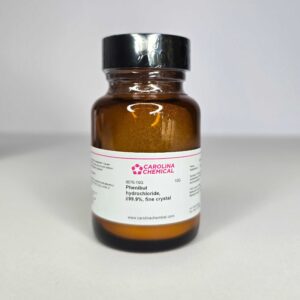
Phenibut Hydrochloride Powder – 10G
$22.00 Add to cart View Product DetailsCAS Number 3060-41-1 Linear Formula C10H14ClNO2 Molecular Weight 215.68 MDL Number MFCD00075860 -
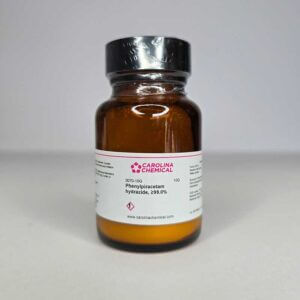
Phenylpiracetam Hydrazide Powder – 10G
$54.28 Add to cart View Product DetailsCAS Number 77472-71-0 Molecular Weight 233.27 Molecular Formula C12H15N3O2 -

Phloxine B
$95.50 Add to cart View Product DetailsPhloxine B
-

Piroxicam
$283.90 Add to cart View Product DetailsPiroxicam
-

Platinum on Alumina, 5 Percent, Catalyst, Powder
$518.62 Add to cart View Product DetailsPlatinum on Alumina, 5 Percent, Catalyst, Powder
-

Platinum on Asbestos, 5 Percent, Catalyst
$1,176.42 Add to cart View Product DetailsPlatinum on Asbestos, 5 Percent, Catalyst
-

Poly(2-hydroxyethyl Methacrylate)
$637.92 Add to cart View Product DetailsPoly(2-hydroxyethyl Methacrylate)
-

Polyacrylamide
$83.52 Add to cart View Product DetailsPolyacrylamide
-

Potassium Tellurite, Powder, Reagent
$180.10 Add to cart View Product DetailsPotassium Tellurite, Powder, Reagent
-

PTH (1-84aa), Human
$50.03 Add to cart View Product DetailsParathyroid Hormone (PTH) is the most important endocrine regulator of calcium and phosphorus con- centration in extracellular fluid. Parathyroid Hormone (PTH) is secreted from cells of the parathyroid glands and finds Parathyroid Hormone’s major target cells in bone and kidney. Like most other protein hormones, Parathyroid Hormone (PTH) is synthesized as a preprohormone. After intracellular processing, the mature hormone is packaged within the Golgi into secretory vesicles, the secreted into blood by exocytosis. Parathyroid Hormone (PTH) is secreted as a linear protein of 84 amino acids. Recombinant Human Parathyroid Hormone (PTH) produced in E. coli is a single, non-glycosylated, polypeptide chain containing 84 amino acids.
-

Quinidine Sulfate, Dihydrate, USP
$139.48 Add to cart View Product DetailsQuinidine Sulfate, Dihydrate, USP
-

Quinine Sulfate, Dihydrate, USP
$174.39 Add to cart View Product DetailsQuinine Sulfate, Dihydrate, USP
-
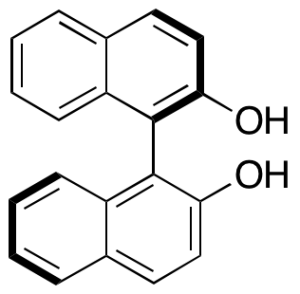
R-(+)-1,1′-Bi-2-Naphthol
$154.39 Add to cart View Product DetailsMolecular Formula : C20H14O2
-
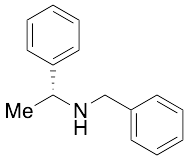
R)-(+)-N-Benzyl-1-phenylethylamine
$100.05 Add to cart View Product DetailsMolecular Formula : C15 H17 N
-
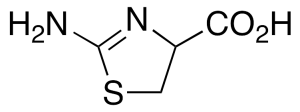
rac 2-Aminothiazoline-4-carboxylic Acid
$690.86 Add to cart View Product DetailsMolecular Formula : C4 H6 N2 O2 S
-
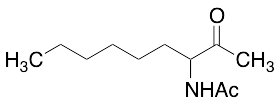
rac 3-Acetamidononan-2-one
$1,154.03 Add to cart View Product DetailsMolecular Formula : C11 H21 N O2
-
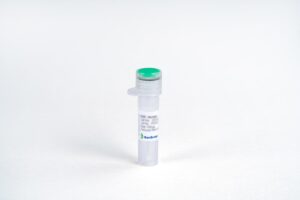
RBP4, His, Human
$63.83 Add to cart View Product DetailsThe properties of retinol binding protein is the transport carrier of vitamin A in the plasma. Human-retinol binding protein is a single-chain polypeptide with a molecular weight of approximately 21000 and one binding site for retinol and other forms of vitamin A. In addition, compounds related to retinol, such as retinal, retinoic acid, retinyl esters and geometric isomers of retinol and of retinal were evaluated for their ability to bind to this protein. In plasma, RBP4-retinol forms a complex with transthyretin (TTR), also known as thyroxine-binding protein and prealbumin. Defects in RBP4 cause retinol-binding protein deficiency, which affects night vision.
-

Rose Bengal
$74.87 Add to cart View Product DetailsRose Bengal
-
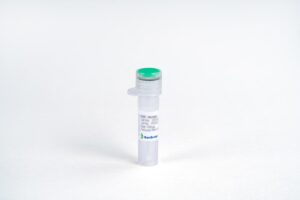
RSPO1, His, Human
$155.25 Add to cart View Product DetailsRSPO1 is a secreted protein, containing 2 FU(furin-like) repeats and 1 TSP type-1 domain and belonging to the R-spondin family. RSPO1 is required for the early development of gonads, regardless of sex. It has been found in mice only eleven days after fertilization. To induce cell proliferation, it acts synergistically with WNT4. They help stabilize β catenin, which activates downstream targets. RSPO1 is necessary in female sex development. It augments the WNT/β catenin pathway to oppose male sex development. In critical gonadal stages, between six and nine weeks after fertilization, the ovaries upregulate it while the testes downregulate it. RSPO1 can potentially aid in the treatment of mucositis, which is characterized by inflammation of the oral cavity. This unfortunate condition often accompanies chemotherapy and radiation in cancer patients with head and neck tumors.
-

S-(+)-2-Amino-1-propanol
$60.38 Add to cart View Product DetailsMolecular Formula : C3 H9 N O
-

Safranine O
$53.82 Add to cart View Product DetailsSafranine O
-

SCF, Human (P. pastoris-expressed)
$86.25 Add to cart View Product DetailsStem cell factor (also known as SCF, KIT-ligand, KL, or steel factor) is a cytokine that binds to the c-KIT receptor (CD117). SCF can exist both as a transmembrane protein and a soluble protein. It stimulates the proliferation of myeloid, erythroid, and lymphoid progenitors in bone marrow cultures and has been shown to act synergistically with colony stimulating factors. SCF plays an important role in the hematopoiesis during embryonic development. SCF can regulates HSCs in the stem cell niche in the bone marrow. SCF has been shown to increase the survival of HSCs in vitro and contributes to the self-renewal and maintenance of HSCs in-vivo.
-

SCF, Mouse
$86.25 Add to cart View Product DetailsStem cell factor (also known as SCF, KIT-ligand, KL, or steel factor) is a cytokine that binds to the c-KIT receptor (CD117). SCF can exist both as a transmembrane protein and a soluble protein. It stimulates the proliferation of myeloid, erythroid, and lymphoid progenitors in bone marrow cultures and has been shown to act synergistically with colony stimulating factors. SCF plays an important role in the hematopoiesis during embryonic development. SCF can regulates HSCs in the stem cell niche in the bone marrow. SCF has been shown to increase the survival of HSCs in vitro and contributes to the self-renewal and maintenance of HSCs in-vivo.
-

SCF, Rat (HEK 293-expressed)
$86.25 Add to cart View Product DetailsStem cell factor (also known as SCF, KIT-ligand, KL, or steel factor) is a cytokine that binds to the c-KIT receptor (CD117). SCF can exist both as a transmembrane protein and a soluble protein. It stimulates the proliferation of myeloid, erythroid, and lymphoid progenitors in bone marrow cultures and has been shown to act synergistically with colony stimulating factors. SCF plays an important role in the hematopoiesis during embryonic development. SCF can regulates HSCs in the stem cell niche in the bone marrow. SCF has been shown to increase the survival of HSCs in vitro and contributes to the self-renewal and maintenance of HSCs in-vivo.
-

SDF-1α/CXCL12, Human
$155.25 Add to cart View Product DetailsStromal-Cell Derived Factor-1 alpha/ CXCL12 (SDF-1α) and SDF-1β, members of the chemokine α subfamily that lack the ELR domain, were initially identified using the signal sequence trap cloning strategy from a mouse bone-marrow stromal cell line. These proteins were subsequently also cloned from a human stromal cell line as cytokines that supported the proliferation of a stromal cell-dependent pre-B-cell line. SDF-1α and SDF-1β cDNAs encode precursor proteins of 89 and 93 amino acid residues, respectively. Both SDF-1α and SDF-1β are encoded by a single gene and arise by alternative splicing. The two proteins are identical except for the four amino acid residues that are present in the carboxy-terminus of SDF-1β and absent from SDF-1α. SDF-1/PBSF is highly conserved between species, with only one amino acid substitution between the mature human and mouse proteins. SDF-1/PBSF acts via the chemokine receptor CXCR4 and has been shown to be a chemoattractant for T-lymphocytes, monocytes, pro- and pre- B cells, but not neutrophils. Mice lacking SDF-1 or CXCR4 have been found to have impaired B-lymphopoiesis, myelopoiesis, vascular development, cardiogenesis and abnormal neuronal cell migration and patterning in the central nervous system.
-

SDF-1β/CXCL12, Human
$155.25 Add to cart View Product DetailsStromal-Cell Derived Factor-1 beta (SDF-1β), also known as SCYB12, PBSF and CXCL12, is an 8.3 kDa, heparin-binding member of the CXC (or alpha) family of chemokines and signal through the CXCR4 receptor. SDF-1α and β are reported to be monomers at neutral pH and physiologic ionic strength, On the cell surface, this may well facilitate SDF-1 interaction with its two receptors, CXCR4 and syndecan4. Heparin sulfate is known to protect SDF-1 from proteolysis, and CXCR4 exists constitutively as a dimer. Among its many functions, CXCL12 is known to influence lymphopoiesis, regulate patterning and cell number of neural progenitors, and promote angiogenesis (12, 13). It also enhances the survival of myeloid progenitor cells
-

sec-Butyl Mercaptan
$88.84 Add to cart View Product DetailsMolecular Formula : C4H10S
-

sec-Butylbenzene
$166.46 Add to cart View Product DetailsMolecular Formula : C10 H14
-

sec-Butylmalonic Acid Diethyl Ester
$867.68 Add to cart View Product DetailsMolecular Formula : C11H20O4
-

Selenious Acid, Reagent
$163.98 Add to cart View Product DetailsSelenious Acid, Reagent
-

Shh (C24II), Human
$68.14 Add to cart View Product DetailsSonic Hedgehog (Shh) is a member of the Hedgehog (Hh) family of highly conserved proteins which are widely represented throughout the animal kingdom. In mammal, there are three related Hh proteins, Sonic (Shh), Desert (Dhh) and Indian (Ihh). They share a high degree of amino-acid sequence identity (e.g., Shh and Ihh are 93% identical). Sonic Hedgehog plays a role in cell growth, cell specialization, and the normal shaping (patterning) of the body. Shh is also important for development of the brain and spinal cord (central nervous system), eyes, limbs, and many other parts of the body.
-

Shh (C25II), Mouse
$68.14 Add to cart View Product DetailsSonic Hedgehog (Shh) is a member of the Hedgehog (Hh) family of highly conserved proteins which are widely represented throughout the animal kingdom. In mammal, there are three related Hh proteins, Sonic (Shh), Desert (Dhh) and Indian (Ihh). They share a high degree of amino-acid sequence identity (e.g., Shh and Ihh are 93% identical). Sonic Hedgehog plays a role in cell growth, cell specialization, and the normal shaping (patterning) of the body. Shh is also important for development of the brain and spinal cord (central nervous system), eyes, limbs, and many other parts of the body.






